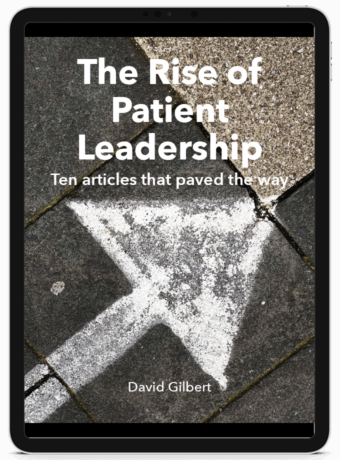The Hawk: Being clear about what I came here to do as a Patient Director
“I went out to the hazel wood,
Because a fire was in my head…”
The Song of Wandering Aengus, WB Yeats.
___
I had lost my way a bit. Ten weeks into the new job, I was asking myself: What had I come here to do?
Amidst the NHS hustle and bustle and colleagues’ operational firefighting, I felt alone. Others within the organisation were pressurised and stressed. And I was frantically trying to construct a sensible programme of work.
In donning my mysterious new Patient Director hat, I was unsure of my ‘corporate’ role (how far should I muck in to help tackle various crises?) and to what degree I should concentrate on my ‘specialist‘ patient-centric input. These and other dilemmas gnawed at me.
I didn’t want to overload colleagues with even more demands. But I could not afford to lose my focus. But what was that focus? I was beginning to lose sleep. Was I up to this job? Am I good enough?
One phrase started to haunt me: ‘When you are up to your neck in alligators, it’s hard to remember that you came to drain the swamp’.
The Hawk
I decided to stay in Brighton for a couple of days while my family were away. On the first day I went for a long long walk over the South Downs, to clear my head. I struggled up a steep hill on my way towards Firle Beacon and suddenly found myself overlooking the Downs. A hawk crested the hill. And my head began to clear. I grabbed my notebook and pen and sat down in between the rabbit droppings.
(It strikes me now that I have forever sought other people’s ideas on values and principles, the ‘leadership’ frameworks within which I can be comfortable. It doesn’t work. That is the child in me. In a new role like this, other people’s ideas are not going to work. I need first to be clear that I am good at what I do. And that’s why I have been brought in. I need to trust myself for a change. There is no model yet for the role of a Patient Director. What am I here to do?)
And I wrote the following...
1. Connect
I need to help staff and patients to (re)connect to the original vision for The Sussex MSK Partnership – that is to ensure that we work with patients as partners and focus on the things that matter to people who use our services. Trite but true. But how?
I can’t yet answer my own question fully. But I am seeing clues. The reconnection is manifesting in different ways.
Conversations with clinical and non-clinical colleagues show me that people are ready to reconnect. Far from being a burden (I was afraid they would see me as wanting them to do work that was tangential to their main tasks), people want to talk about how the service can connect to patients’ needs. I may be delusional, but I get the sense that staff want the room to breathe – to reconnect with why they came here too! That’s encouraging.
More hard edged is the work I am doing with clinical leaders – from thinking through patient-centred outcomes (e.g. in knee surgery) to changing how we measure successful shared decision-making; These things were in our original bid and was why commissioners gave us the contract to provide services. This is re-connection.
However, it’s also about bringing my own vision to that mix – all the stuff I have talked about for years, about patients being true partners at strategic level. Can this happen?
Well, we’ve already held discussions with rheumatology patients. And we are changing things as a result. With their continued contribution, we will design a role for peer support workers in and around our community clinics. We have got the thumbs up to recruit, support, pay and train patient/carer advisors on the multi-disciplinary team (MDTs) that will oversee how the rheumatology service works. We’ve also received a big yes to providing much better quality patient information at each step of the ‘pathway’.
Staff are damn busy, but I am also working with others to find out how we can develop a ‘think-patient’ staff culture and induction module. Something practical, relevant and useful. Maybe even fun. There seem multiple routes to reconnection.
2. Hard-wire
On the MBTI (Myers Briggs personality inventory) I am a strong ‘J’ – needing to structure and organise my thinking. So I have developed distinct programmes of work – on supported self-management; patient experience and outcomes; information; shared-decision making; patients as partners (or ‘involvement’).
If we are to be successful, it won’t be because I am doing all the work. Indeed, I would keel over if it was. I was brought in to be strategic, so I had better blooming strategise.
I learned long ago at the Commission for Health Improvement (CHI) that you have to make involvement part of everyone’s job. So, how do we hard-wire engagement systems, processes, training and tools to support patient engagement? With clinical and multi-professional teams; in managerial and admin work.
I have begun to find out which meetings to attend, where those who can influence change are present. The next month or two will be very much focused on how to shift cultures and systems. How to build capacity of staff, how to make sure 'patient experience' and everything else is a standing agenda on management meetings of all sorts.
We need to bring in, and bring on patients and carers – properly recruited, paid, supported and trained - to be on every MDT. There is one MDT for each of the clinical pathways, from spine to shoulder, from hips/knees to feet/ankle, from rheumatology to pain... Patients/Carer advisors will keep conversations focused on what matters, ask questions, provide insights and model equal relationships.
One subtle but really important insight is that I need to distinguish between work I can directly influence (e.g. self-management, gathering and using patient experience data, getting patients involved) and those where my role is less direct and where others have lead responsibility (e.g. working with clinicial leads on shared decision making).
Understanding the difference between my strategic development role - that is, helping to do things differently and improve - and implementation (i.e. making sure the day to day systems are in place) is teaching me the hard way about who does what, and who needs to be kept aware of what I am up to. It is no good commissioning eight self-management programmes, if the admin folk are already too busy to cope with more work. But we are getting there!
3. Be the Change
It is a cliché, but nevertheless true: I need to be the change I want to see. I have learned from Mark Doughty, my co-founder at the Centre for Patient Leadership, to try and model high quality relationships.
I have been battling significant demons. Feeling lost, I have become childlike at times. I have sought reassurance, got irritated and angry. But I have also taken long walks in the park talking to myself: ‘I am a Director, I am a Director…’. I need to grow up, take responsibility. Sometimes, the decision is mine.
Learning to trust myself is a lifelong challenge, but it is coming slowly. Knowing that this is the first time a NHS organisation has appointed a Patient Director feels onerous as well as exciting. I want to create a path for others. What if I f@(k up?
I find it hard to be gentle with myself. This has been an extreme and heady transition. I have moved from outsider to insider; from a relatively junior to senior role (as an erstwhile engagement practitioner to Board level); and this is a role nobody has tried before, in an organisation trying to change the way the health service delivers integrated care… no wonder it is tricky.
I am surrounded by impressive managerial and clinical leaders – mostly this is inspirational and supportive. But I have to admit I feel overawed by their talents at times. I have to remind myself I am OK too. And above all to be patient.
Connect. Hard-wire; Be the change. Those are my watchwords for now. We are still learning as the role evolves. What else should I be doing? Let me know.
I look up, and the hawk is still there, winging the currents, pausing to hover, clear-sighted, ready.


Did you know that the email for your organisation doesn't work? Well I can never get a reply on it. Perhaps they've all got the kind of problems you have, in which case we're really f***** Probably more likely they're all overworked and underpaid and the high-flown systems can't be manned. It grates though that the system looks so damn accessible. I mused on this as I walked (or rather limped) over Firle Beacon. Hope you are feeling better and might look into this problem.
A. Patient (Very).
Let me know what email you are using and I will check it out next week. We all know our website isn't good enough and we are trying to change it. Yes we are all overworked and underpaid 🙂 but we are doing some good work too. Thanks for making the effort to comment. And give my best to Firle! Such a lovely area.